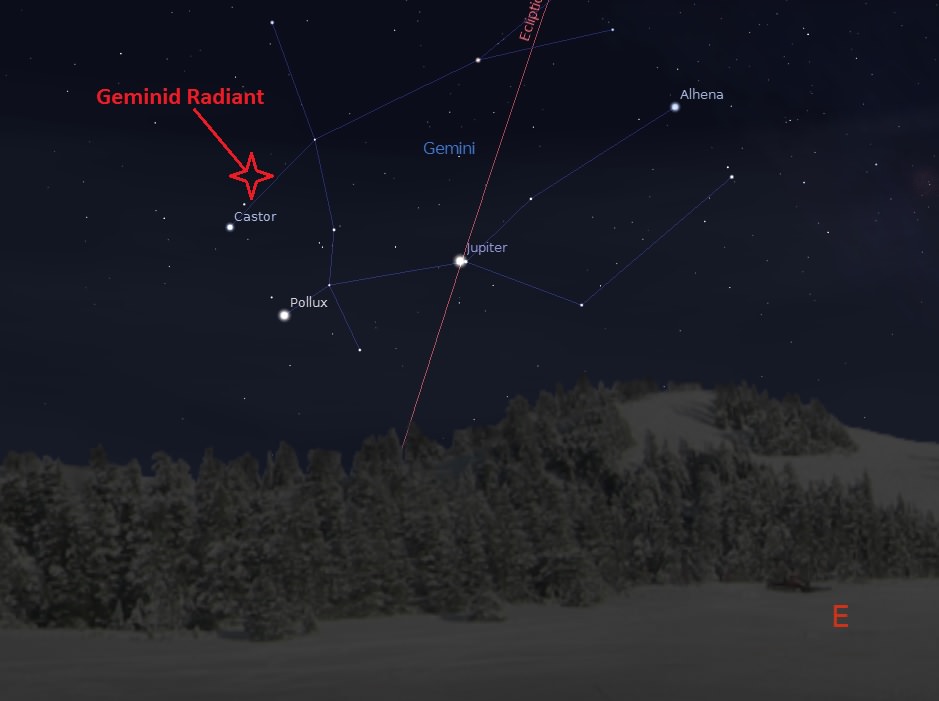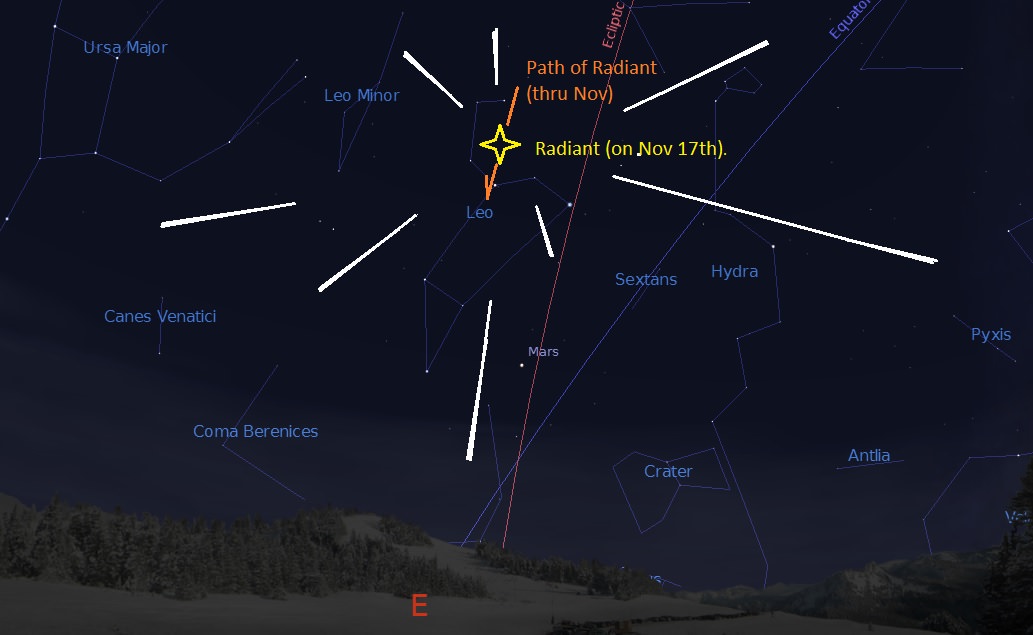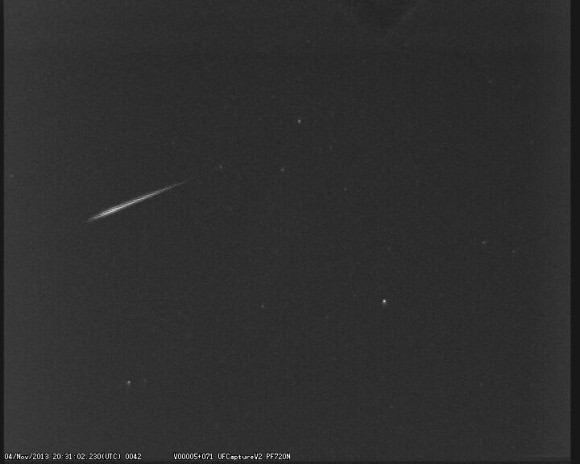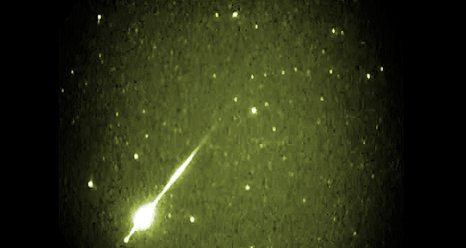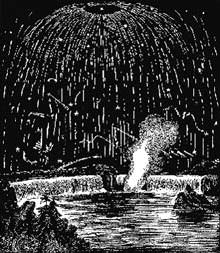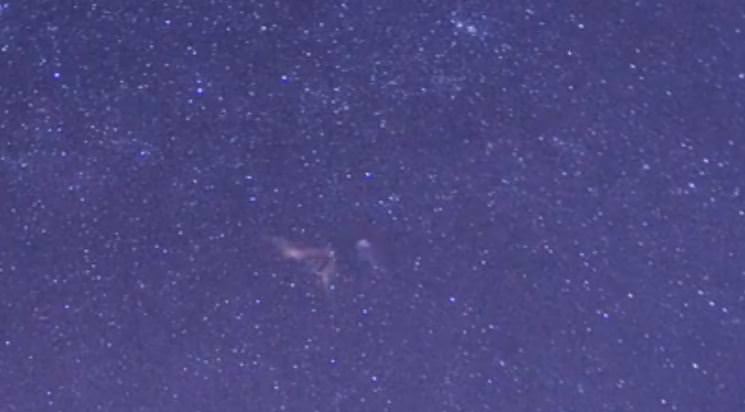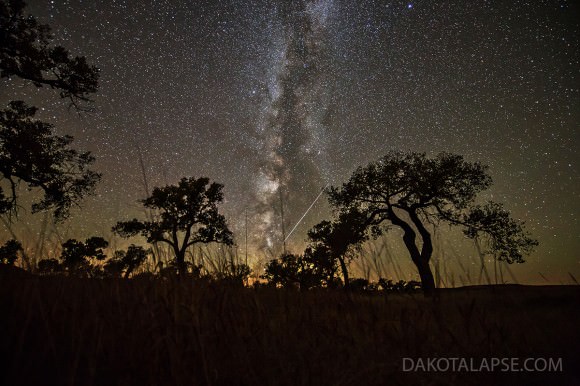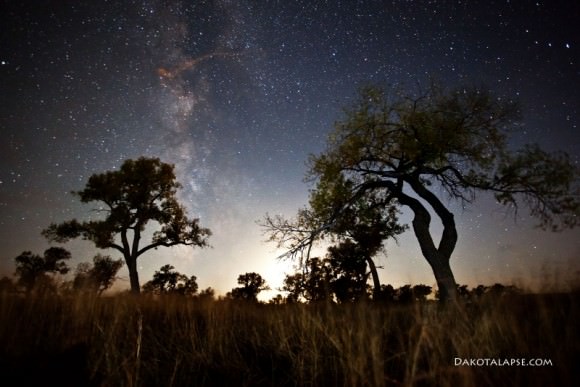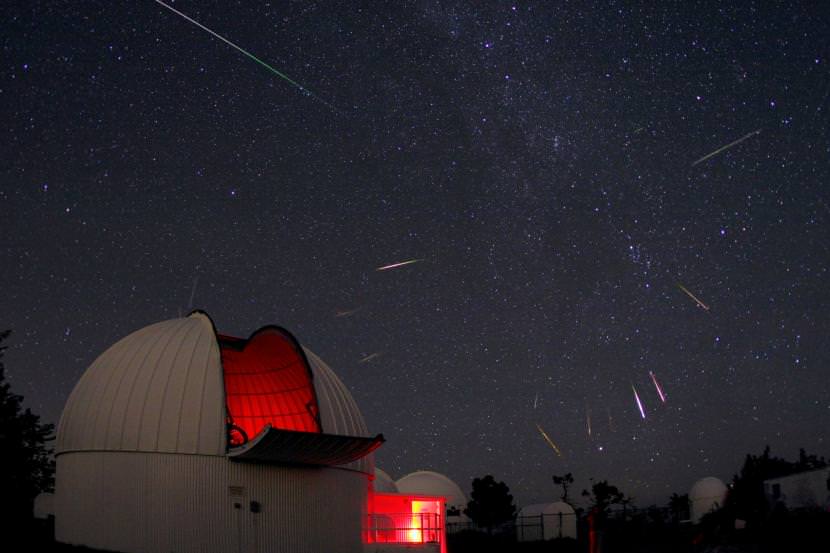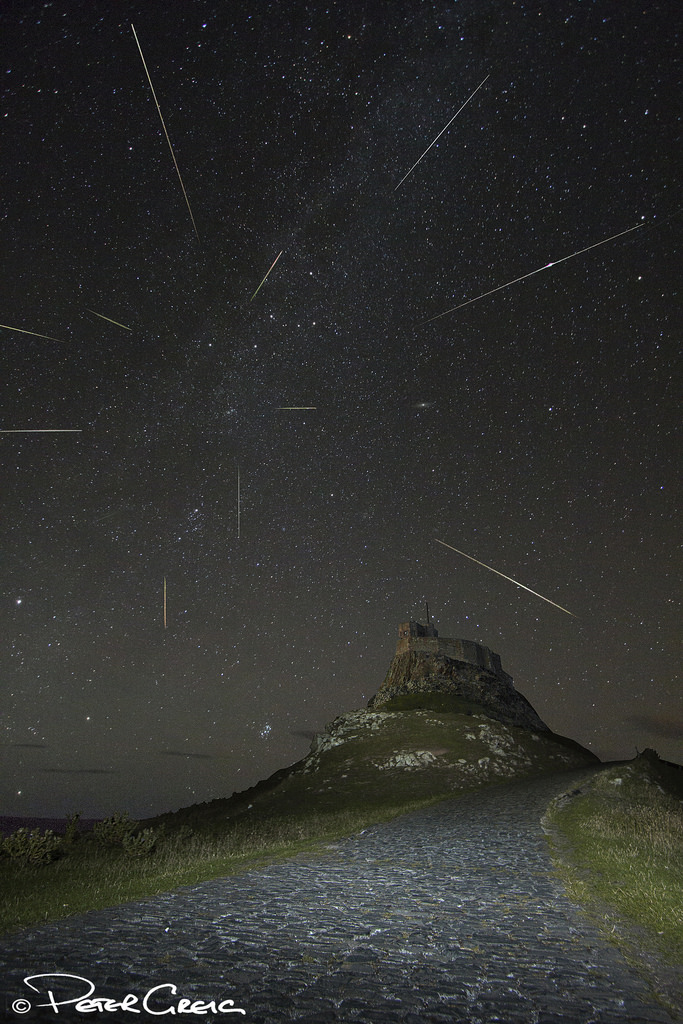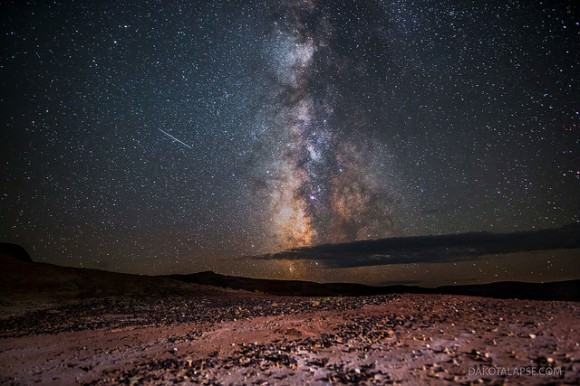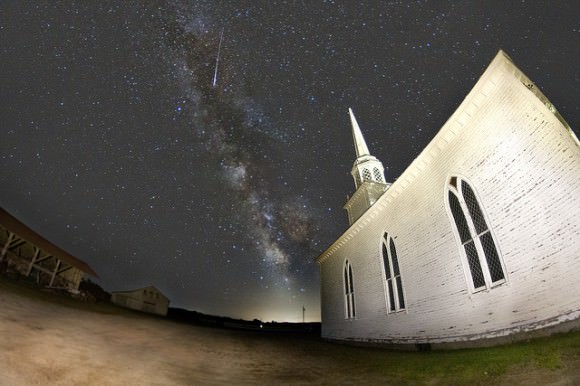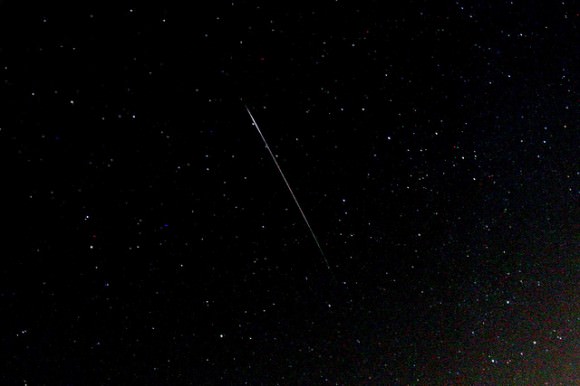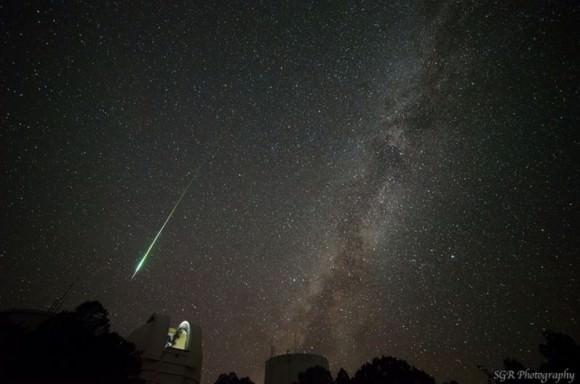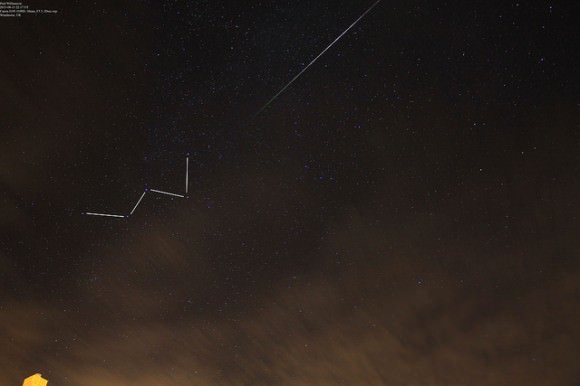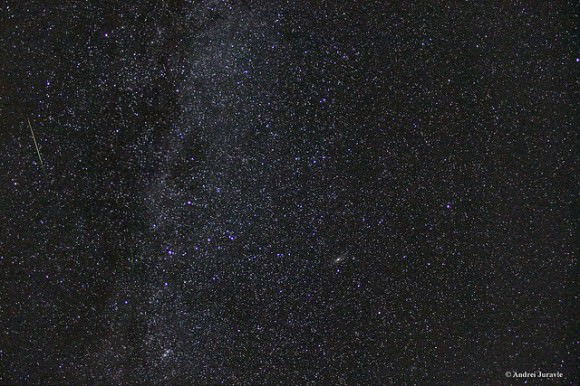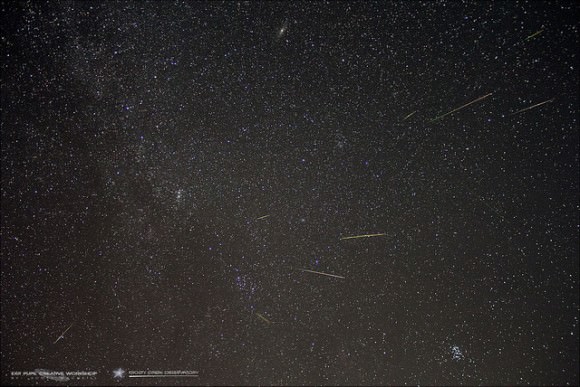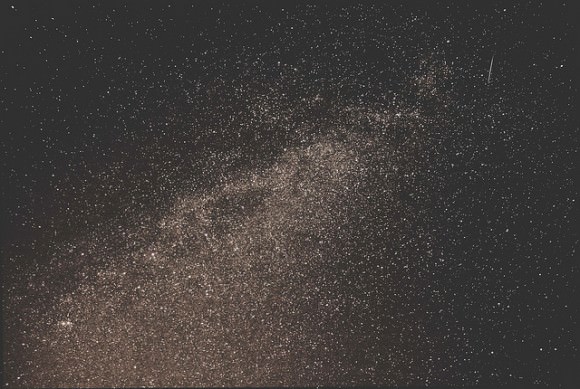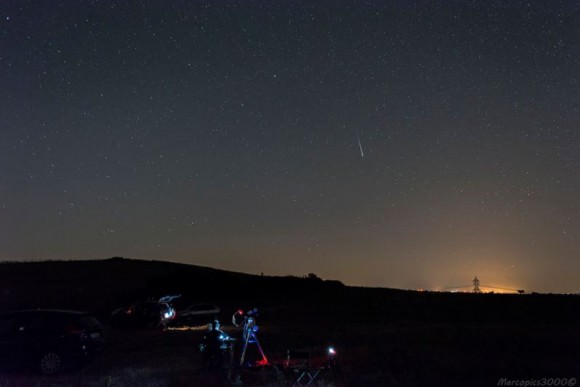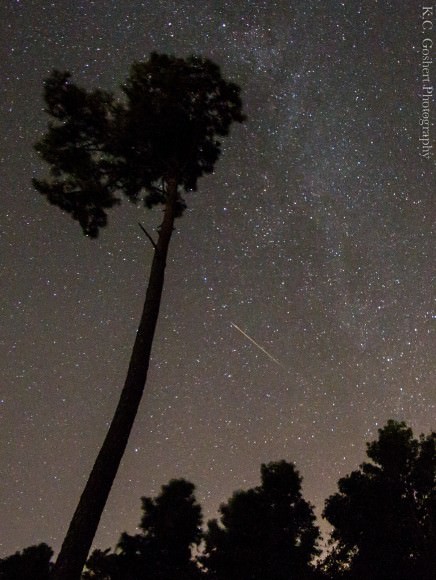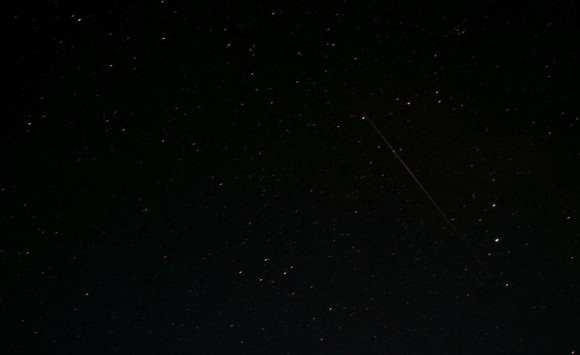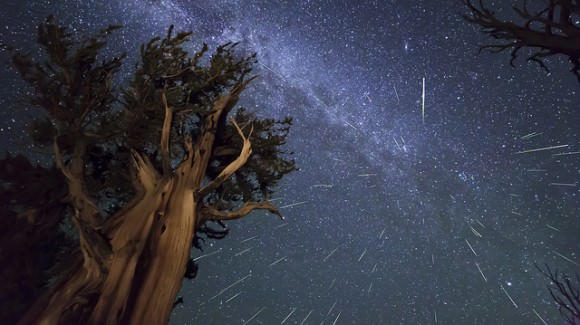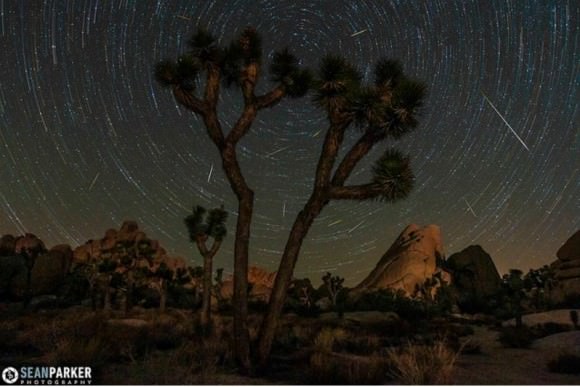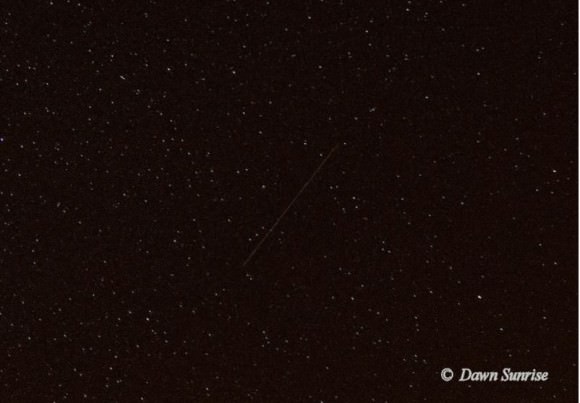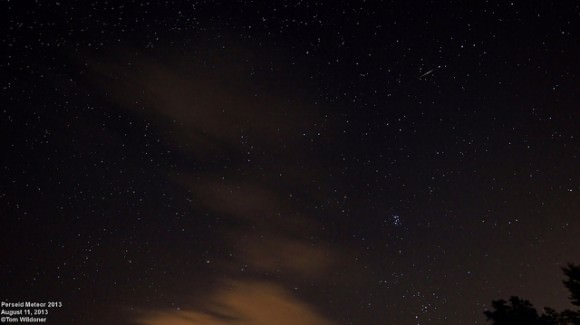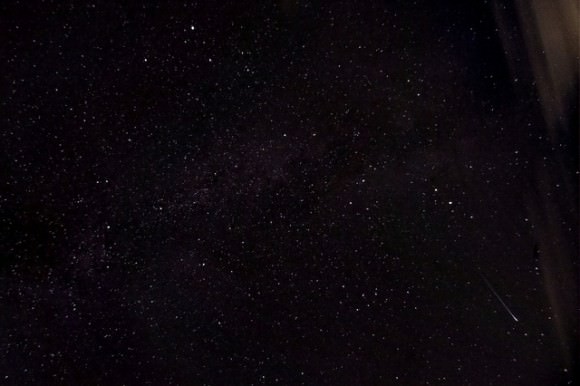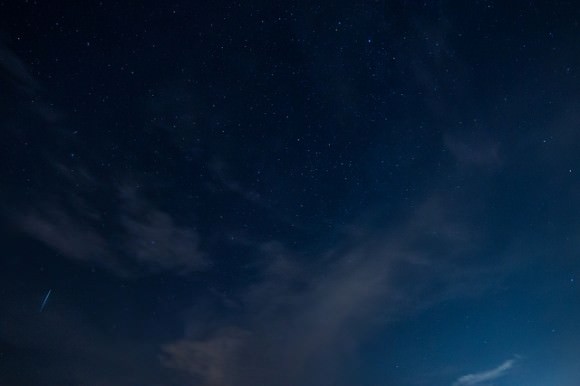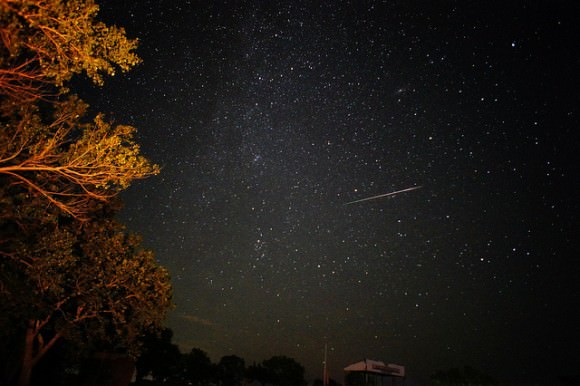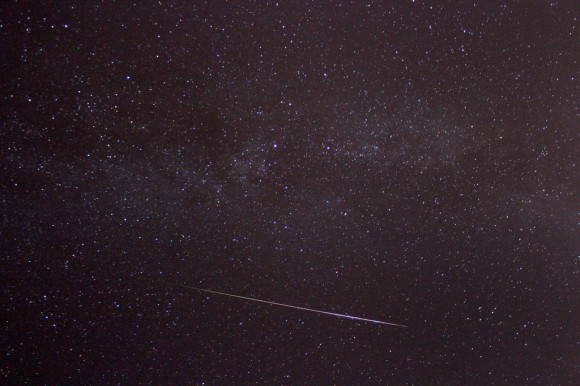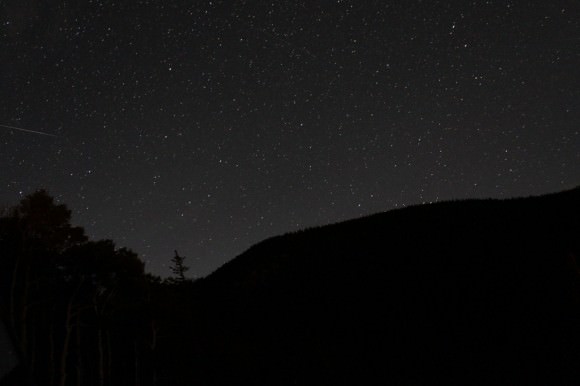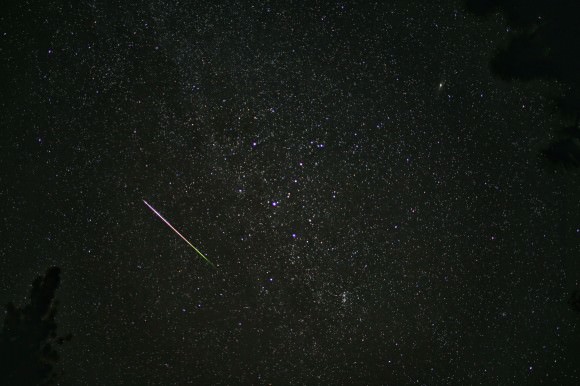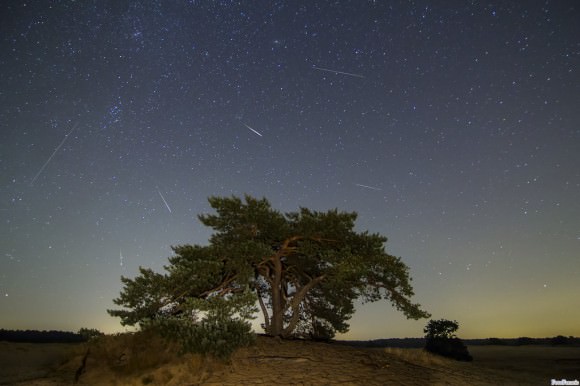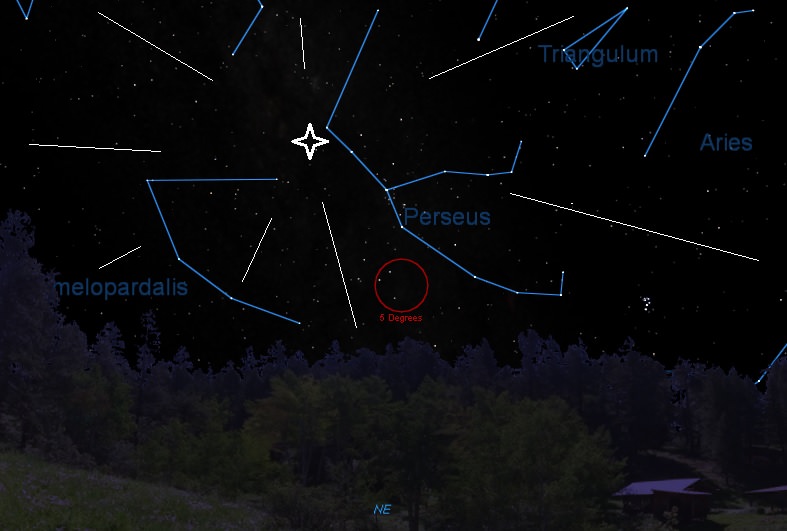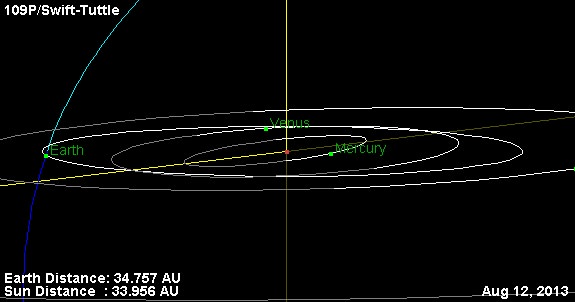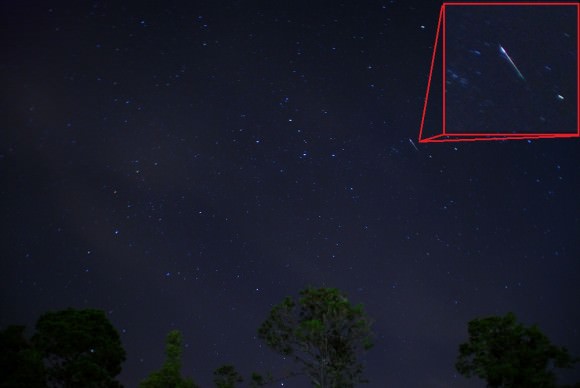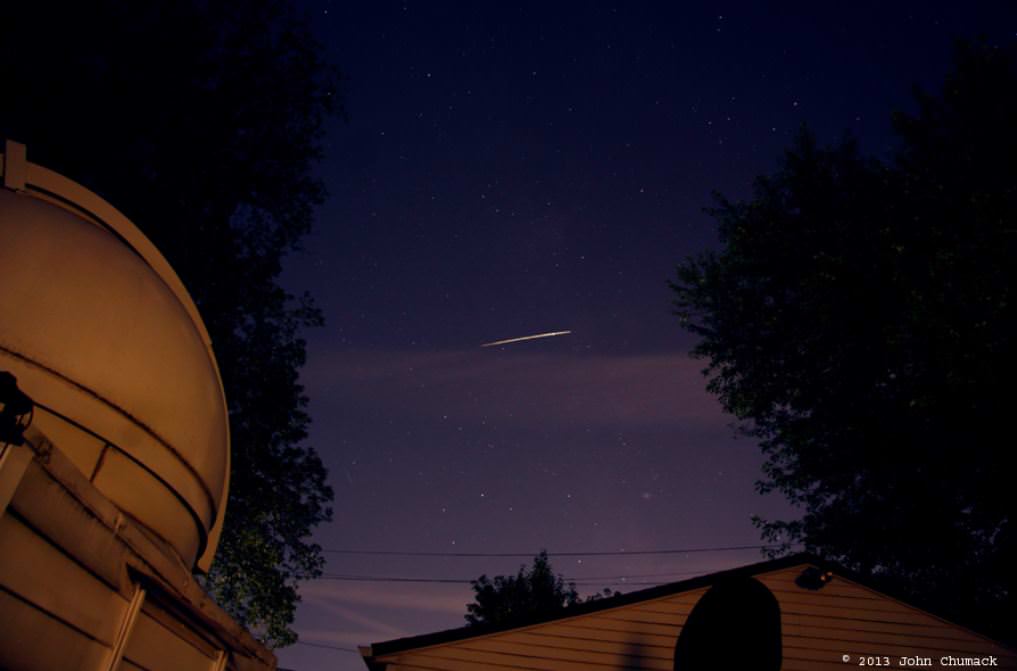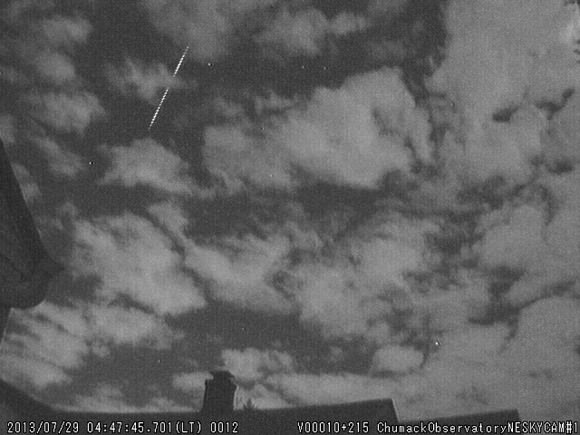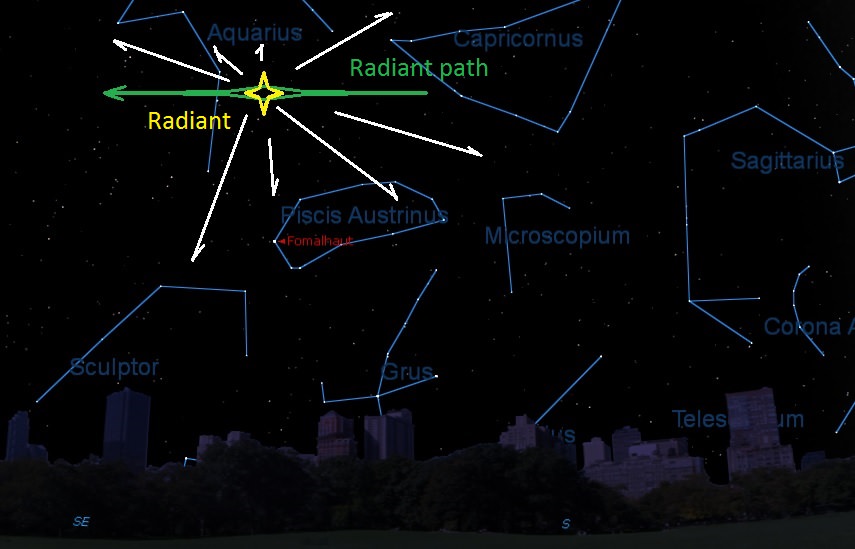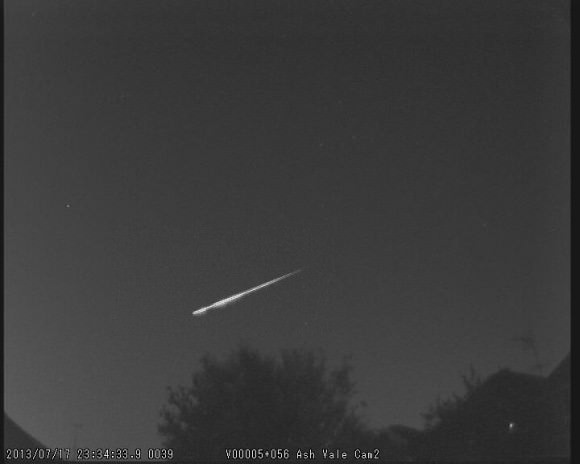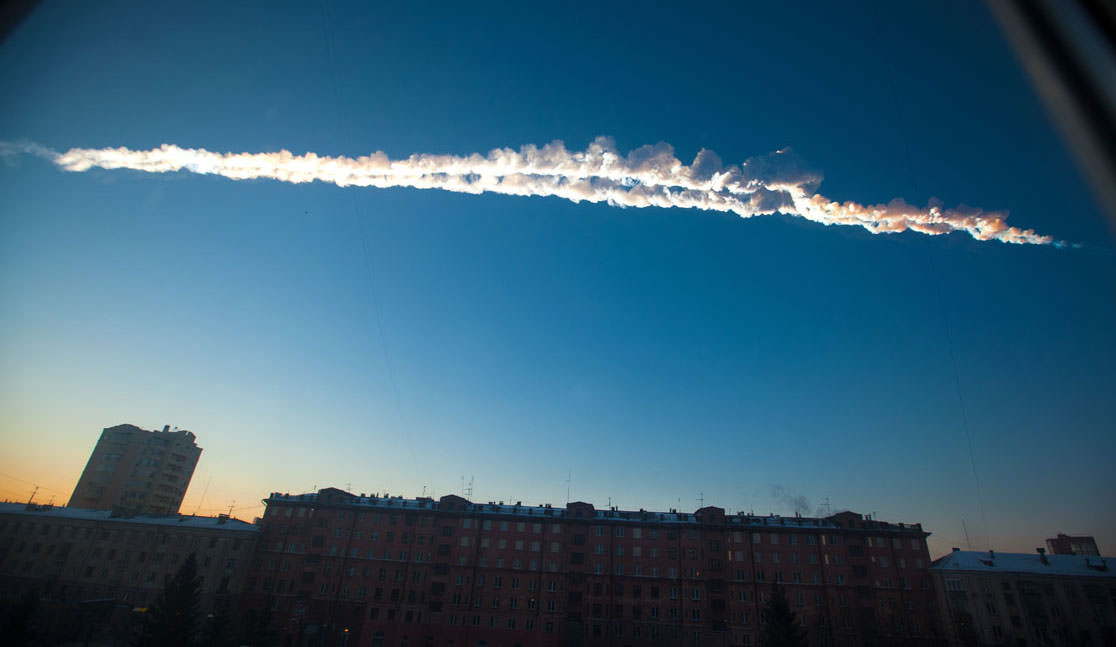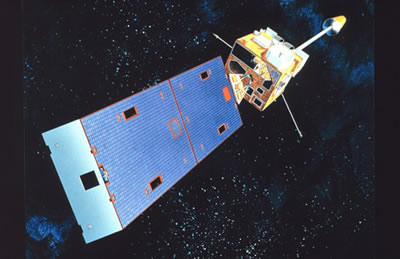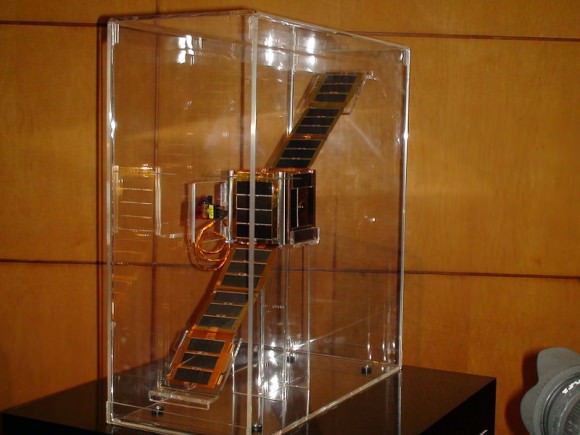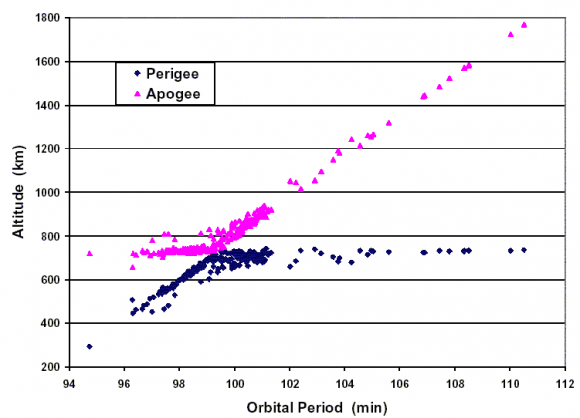One of the best annual meteor showers occurs this coming weekend.
The 2013 Geminid meteors peak this coming Saturday on December 14th. This shower has a broad maximum, assuring that observers worldwide get a good look. In 2013, the maximum for the Geminids is forecast to span from 13:00 Universal Time (UT) on Friday, December 13th to 10:00UT/5:00AM EST on Saturday, December 14th, with a projected maximum centered a few hours earlier at 2:00 UT Saturday morning.
This is good news for observers spanning both sides of the Atlantic, who should be well placed to catch the event. Keep in mind, meteor showers often peak hours before or after predictions… we certainly don’t know everything that a given meteor stream might have in store!
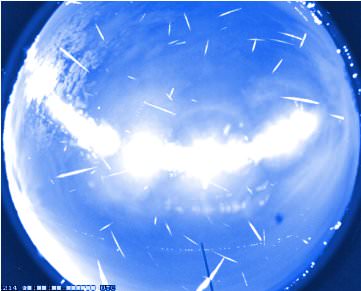
But the time to start watching is now. We’ve already seen a few early Geminids this past weekend, and this shower is notable for showing early activity for northern hemisphere observers before local midnight. This is because the radiant, or the direction that the meteors seem to emanate from lies at a high northern declination of 33 degrees north near the star Castor, also known as Alpha Geminorum.
The typical Zenithal Hourly Rate for the Geminids is 80-120, or about 1 to 2 per minute. Keep in mind, the ZHR is an ideal rate, assuming dark skies, with the radiant positioned directly overhead. Most observers will see significantly less activity.
The 2013 Geminids also have to contend with the waxing gibbous Moon, which reaches Full just 3 days after the shower’s expected maximum. This will give observers a dwindling window between moonset and the start of dawn twilight to catch the Geminids at their best.
We always thought that the Geminids had a bit of an undeserved PR problem among annual showers. This no doubt stems from the fact that they arrive in the chilly month of December, a time when fingers go numb, camera batteries die, and conducting a vigil for meteors is challenging.
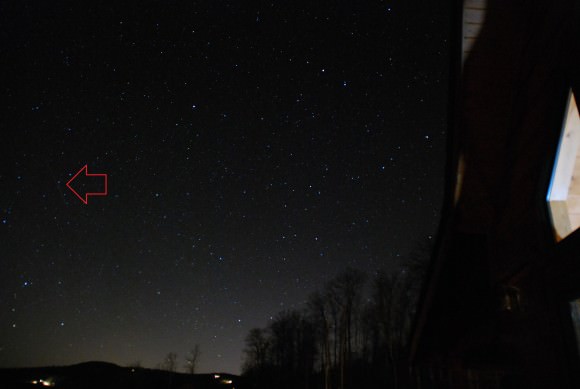
This shower is an interesting one though, with an equally interesting history and source. The Geminids were first identified as a distinct meteor shower by R.P. Greg of Manchester UK in 1862, and the estimated ZHR rose from about 20 to 80 through the 20th century. The parent source of the Geminids remained unknown until 1983, when astronomer Fred Whipple linked them to the strange “rock-comet” body 3200 Phaethon. An Apollo asteroid also thought to be a member of the Pallas family of asteroids, 3200 Phaethon seems to be shedding enough material to produce the annual Geminid meteor shower. This makes the annual shower rare as one not produced by a comet. It’s worth noting that 3200 Phaethon also passes extremely close – 0.14 AU – from the Sun at perihelion, and gets periodically “baked” during each 1.4 year passage.
In the 21st century, rates for the Geminids have stayed above a ZHR of 120, currently the highest of any annual shower. It’s worth noting that an extrapolated ZHR of almost 200 were seen in 2011 when the Moon was at an equally unfavorable waning gibbous phase! The Geminids always produce lots of fireballs, capable of being seen even under moonlit skies.
There are also two other showers currently active to watch for this week. One is the Ursid meteors, which radiate from the Little Dipper (Ursa Minor) with a peak ZHR of 10-50 occurring on December 22nd. Also, keep an eye out for Andromedid meteors this week, a defunct shower that may be making a comeback. The source of several great meteor storms in the late 19th century, the Andromedid parent source is the shattered comet formerly known as 3D/Biela.
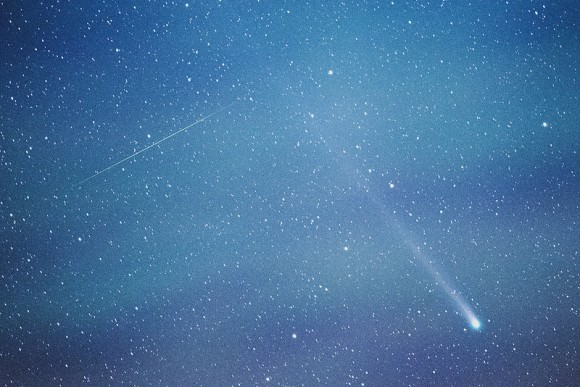
Though the Geminids appear to radiate from the constellation Gemini, they can appear anywhere in the sky. Tracing the path back can determine the source constellation and the “membership” of a given meteor. Random meteors not associated with any identified shower are known as “sporadics.” Block that pesky light-polluting Moon behind a building or hill to optimize your chances of catching sight of a meteor. Employing a friend or two to watch in different directions will also maximize the number seen. The International Meteor Organization always welcomes reports from observers… this is real science that you can contribute to using nothing more sophisticated than your eyes!
The Geminids are medium-speed meteors with an average atmospheric velocity of about 35 kilometres per second, often leaving long, glowing trails worth examining with a pair of binoculars. You might note an apparent surge in speed to this shower past local midnight, as your vantage point turns into the oncoming shower, adding the velocity of the Earth to the approaching Geminids.
Photographing meteors is fun and easy to do; all you’ll need is a DSLR camera mounted on a tripod. Take several manual setting exposures to get the combination of ISO,F-stop, and shutter speed correct for your local sky conditions. Then simply set the focus to infinity, and use the widest field of view possible. Catching meteors is surreptitious, as they can appear anywhere – and at any time – in the sky. Be sure to thoroughly review those images afterwards… nearly every meteor we’ve caught photographically went unnoticed during observation!
Also, remember that cold weather plus long exposure times can conspire to drain camera batteries in a hurry. Be sure to keep a spare set of charged batteries ready to go in a warm pocket!
How powerful will the Geminids become? Are we in for a “return of the Andromedids” moving towards 2014? One thing is for sure: you won’t see any meteors if you don’t try. So be sure to get out there, pour a mug of your favorite warming beverage, and don’t miss the 2013 Geminid meteor shower!
– Got meteors? Be sure and tweet ‘em to #Meteorwatch.
– Be sure to send those pics of Geminids and more in to Universe Today.

